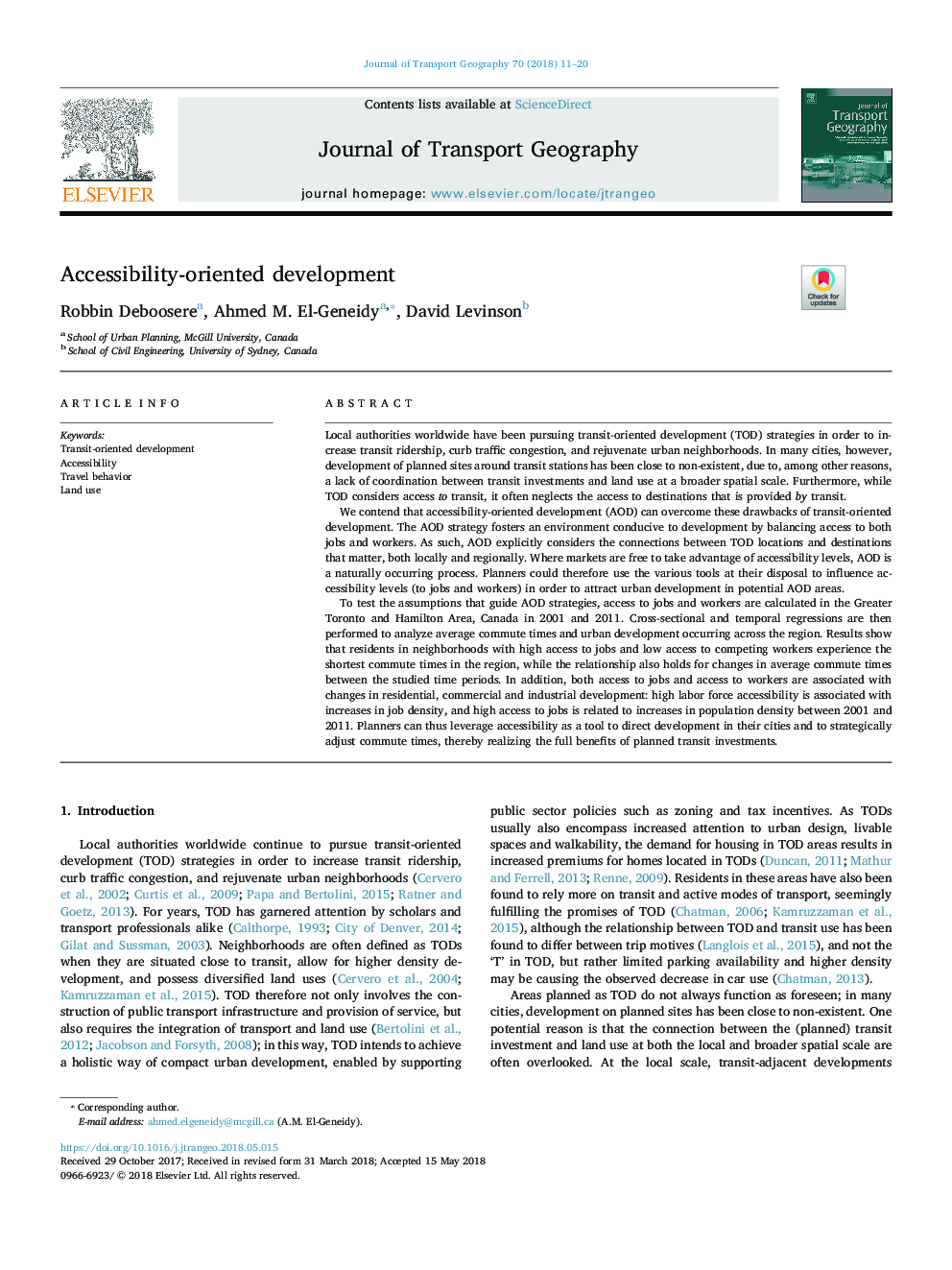| Article ID | Journal | Published Year | Pages | File Type |
|---|---|---|---|---|
| 7484970 | Journal of Transport Geography | 2018 | 10 Pages |
Abstract
To test the assumptions that guide AOD strategies, access to jobs and workers are calculated in the Greater Toronto and Hamilton Area, Canada in 2001 and 2011. Cross-sectional and temporal regressions are then performed to analyze average commute times and urban development occurring across the region. Results show that residents in neighborhoods with high access to jobs and low access to competing workers experience the shortest commute times in the region, while the relationship also holds for changes in average commute times between the studied time periods. In addition, both access to jobs and access to workers are associated with changes in residential, commercial and industrial development: high labor force accessibility is associated with increases in job density, and high access to jobs is related to increases in population density between 2001 and 2011. Planners can thus leverage accessibility as a tool to direct development in their cities and to strategically adjust commute times, thereby realizing the full benefits of planned transit investments.
Related Topics
Life Sciences
Environmental Science
Environmental Science (General)
Authors
Robbin Deboosere, Ahmed M. El-Geneidy, David Levinson,
